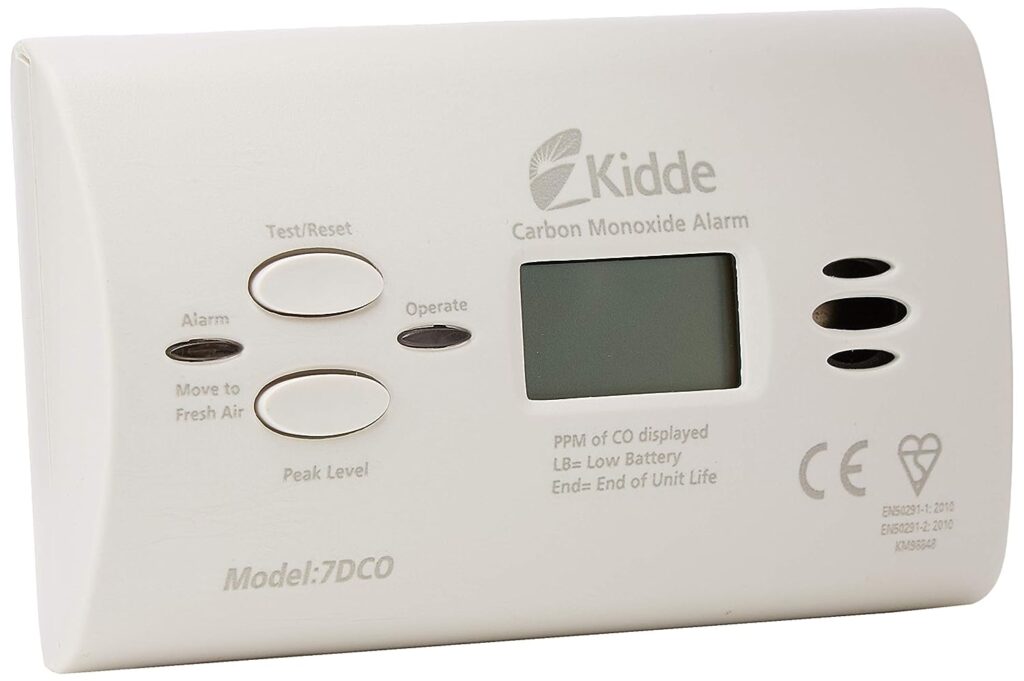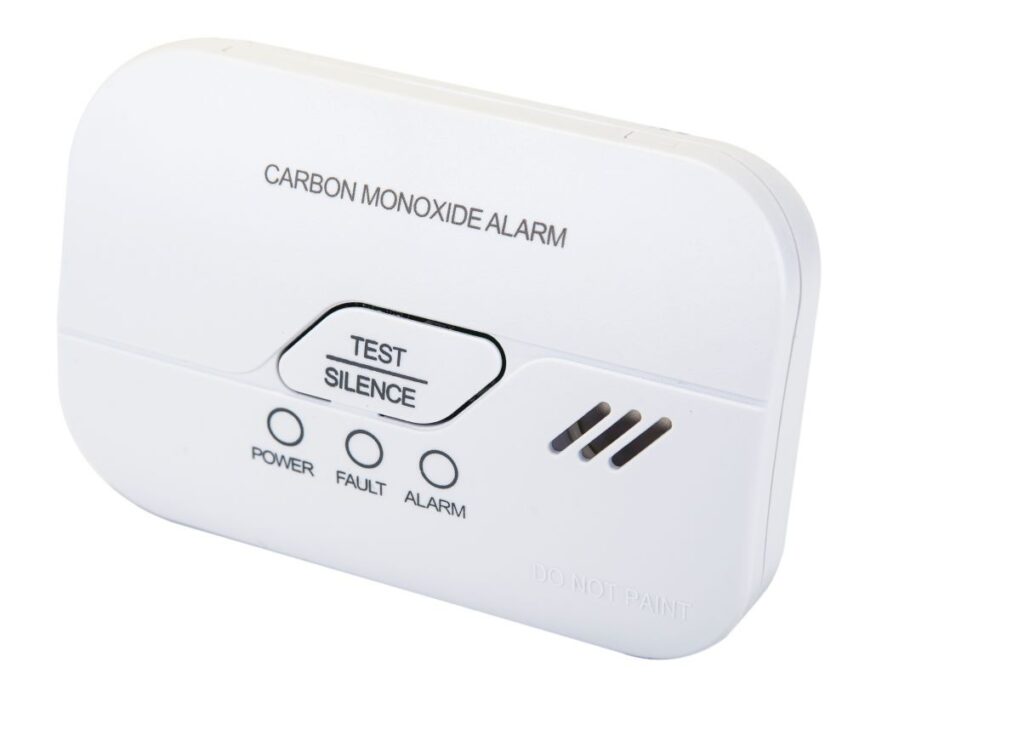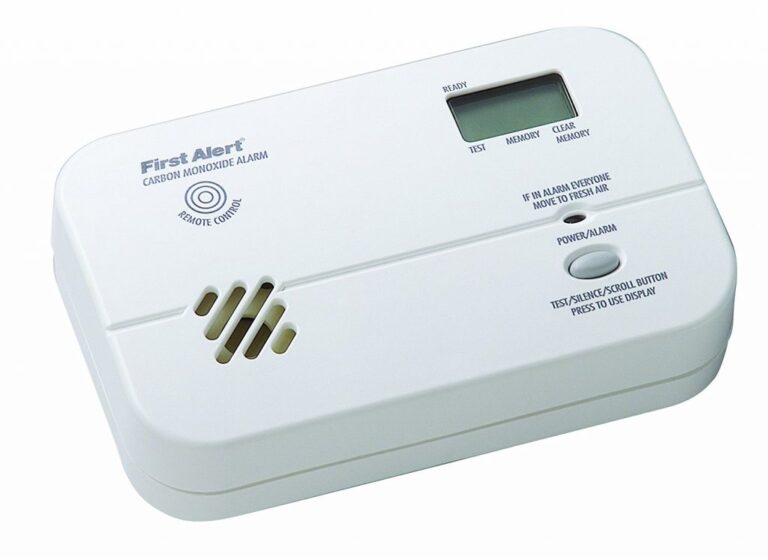Introduction
How To Stop Carbon Monoxide Detector Beeping Every 30 Seconds: Getting rid of CO detector beeping every 30 seconds: Every home needs carbon monoxide detectors. They detect carbon monoxide, a colorless, odorless gas that can kill if ingested in high doses. Carbon monoxide detectors are intended to beep loudly when they detect even the slightest amount. This beeping sound alerts inhabitants to a potential hazard, but it can be annoying and disruptive if it happens every 30 seconds.
There are several reasons why a carbon monoxide detector may beep every 30 seconds. The detector will beep when the battery level dips below a specified threshold, signaling a replacement. Sensor failure is another possibility. The detector sensor may become dusty or worn out, generating false alerts and repeated beeping. Some detectors also feature a 30-second timer that alerts when they need to be replaced.
A beeping carbon monoxide detector may signify a serious problem, so act quickly. Carbon monoxide is a silent killer that can cause major health issues or death if exposed to high levels. Thus, your carbon monoxide detector must work effectively and not give false alarms. This post can help you fix a carbon monoxide detector beeping every 30 seconds.

How do I get my carbon monoxide detector to stop beeping?
Carbon monoxide detectors are essential safety devices that alert you to the presence of this odorless and potentially deadly gas in your home. However, it can be quite frustrating when your carbon monoxide detector starts beeping for no apparent reason. Understanding why your detector is beeping and how to stop it can help ensure the safety of you and your family.
Firstly, it is important to determine the reason behind the beeping. Carbon monoxide detectors typically beep to indicate a problem, such as a low battery, a malfunction, or the presence of carbon monoxide. The first step is to check the detector’s display or user manual to identify the specific issue. If it is a low battery, simply replacing the battery should stop the beeping. The detector is malfunctioning, it may need to be replaced.
If the detector is beeping due to the presence of carbon monoxide, take immediate action. Carbon monoxide is a dangerous gas that can cause illness or even death. If your detector is beeping and indicating the presence of carbon monoxide, evacuate your home immediately and call emergency services. Do not re-enter your home until it has been deemed safe by professionals.
Regular maintenance is crucial to prevent unnecessary beeping. To guarantee optimal operation, test your carbon monoxide detector monthly.Additionally, clean the detector regularly to remove any dust or debris that may interfere with its operation. Following these maintenance practices can help prevent false alarms and ensure the detector is ready to alert you to any potential danger.
Why does my carbon monoxide alarm keep beeping every 30 seconds?
There can be several reasons why your carbon monoxide alarm keeps beeping every 30 seconds. CO alarms alert you to unsafe levels of this odorless, colorless gas in your house.The beeping sound is a warning signal that indicates the presence of CO in the air. It is important to address this issue promptly to ensure the safety of you and your family.
One possible reason for the continuous beeping is a low battery. Most carbon monoxide detectors have a battery backup to keep them working during a power outage. When the battery is low, the alarm will beep to remind you to replace it. Replace the battery once a year to keep the alarm working.
Another reason for the beeping could be a malfunctioning sensor. Over time, the sensors in carbon monoxide alarms can become less sensitive or even fail completely. This can result in false alarms or the alarm not detecting CO levels accurately. If you have replaced the battery and the beeping continues, it may be necessary to replace the entire alarm to ensure your safety.
It is important to note that carbon monoxide alarms have a limited lifespan, typically around 5-7 years. After this time, the sensors may become less reliable, and the alarm may not function as intended. If your alarm is older than this, it is recommended to replace it with a new one to ensure your safety.
How long does it take for a carbon monoxide detector to stop beeping?
Carbon monoxide detectors are essential safety devices that alert us to the presence of this deadly gas in our homes or workplaces. When a carbon monoxide detector detects high levels of carbon monoxide, it emits a loud, beeping sound to warn us of the danger. However, once the source of carbon monoxide is eliminated and the air is clear, the detector should stop beeping. The time it takes for a carbon monoxide detector to stop beeping can vary depending on several factors.
Firstly, it is important to understand that carbon monoxide detectors are designed to be highly sensitive to even small amounts of carbon monoxide. This is because carbon monoxide is a colorless and odorless gas that can be deadly in high concentrations. Therefore, if a carbon monoxide detector is beeping, it is crucial to take it seriously and investigate the cause immediately.
The duration of the beeping can depend on the concentration of carbon monoxide in the air. If the levels are very high, the detector may continue to beep until the air is completely clear. In such cases, it is important to evacuate the premises and seek professional help to identify and fix the source of carbon monoxide.
However, if carbon monoxide levels are low, the detector may stop beeping once ventilation lowers them. Open windows and doors to circulate fresh air and dilute the gas. It is important to note that this process may take some time, and it is advisable to wait until the detector stops beeping before assuming that the air is safe.
Why is my carbon monoxide beeping every minute?
Carbon monoxide detectors are designed to alert you when there is a dangerous level of carbon monoxide in your home. When your carbon monoxide detector is beeping every minute, it is indicating that there may be a problem. It is important to address this issue promptly to ensure the safety of you and your family.
There are several reasons why your carbon monoxide detector may be beeping every minute. One possible reason is that the detector’s batteries are low. Carbon monoxide detectors typically have a battery backup to ensure they continue to function even during a power outage. If the batteries are low, the detector will beep to alert you to replace them. It is important to replace the batteries with new ones as soon as possible to ensure the detector continues to work properly.
Another possible reason for the beeping is that there is a carbon monoxide leak in your home. Carbon monoxide is a colorless and odorless gas that can be extremely dangerous. If your detector is beeping every minute, it may be detecting a high level of carbon monoxide in the air. In this case, it is crucial to evacuate your home immediately and call emergency services. Carbon monoxide poisoning can be life-threatening, so it is important to take this warning seriously.
In some cases, the beeping may be a false alarm. Carbon monoxide detectors can sometimes be triggered by other gases or substances in the air, such as cigarette smoke or cleaning products. If you suspect that the beeping is a false alarm, you can try resetting the detector or moving it to a different location in your home. However, it is always better to err on the side of caution and contact a professional to ensure your safety.
What are two warning signs of carbon monoxide poisoning?
Carbon monoxide poisoning is a serious and potentially life-threatening condition that occurs when a person inhales too much carbon monoxide gas. This gas is produced by the incomplete combustion of fuels such as gasoline, natural gas, and wood. Because carbon monoxide is odorless and colorless, it can be difficult to detect without the use of special equipment. However, there are two warning signs that can indicate the presence of carbon monoxide poisoning.
The first warning sign of carbon monoxide poisoning is flu-like symptoms. When a person is exposed to high levels of carbon monoxide, they may experience symptoms that are similar to the flu. These symptoms can include headache, dizziness, nausea, vomiting, and fatigue. In some cases, the person may also have difficulty breathing or experience chest pain. It is important to note that these symptoms can vary in severity and may be more pronounced in individuals who are already vulnerable, such as the elderly or those with pre-existing health conditions.
The second warning sign of carbon monoxide poisoning is a cherry-red coloration of the skin. In severe cases of carbon monoxide poisoning, the person’s skin may take on a distinctive cherry-red color. This is due to the fact that carbon monoxide binds to the hemoglobin in red blood cells, preventing them from carrying oxygen to the body’s tissues. As a result, the skin may appear flushed and have a reddish hue. This symptom is a clear indication that the person is experiencing a medical emergency and requires immediate medical attention.
How can I troubleshoot and stop the constant beeping of my carbon monoxide detector?
If your carbon monoxide detector is beeping constantly, it is important to address the issue promptly to ensure your safety. The constant beeping is usually an indication of a problem that needs to be resolved. Here are some steps you can take to troubleshoot and stop the beeping:
1. Check the batteries: The first thing you should do is check the batteries of your carbon monoxide detector. Low battery power can cause the device to beep. Replace the batteries with fresh ones and see if the beeping stops.
2. Test the detector: Use the test button on your carbon monoxide detector to check if it is functioning properly. Follow the manufacturer’s instructions to perform the test. If the detector fails the test, it may need to be replaced.
3. Clean the detector: Dust and debris can interfere with the proper functioning of your carbon monoxide detector. Use a soft brush or vacuum cleaner to clean the vents and sensors of the device. Make sure to turn off the power before cleaning.
Are there any specific steps or instructions to follow in order to stop the beeping of a carbon monoxide detector?
When your carbon monoxide detector starts beeping, it is important to take immediate action to ensure the safety of yourself and your household. The beeping sound is an indication that there may be a potential carbon monoxide leak or malfunction in the detector. Here are some specific steps and instructions to follow in order to stop the beeping and address the issue:
1. Check for carbon monoxide presence: The first step is to ensure that there is no actual carbon monoxide present in your home. Open windows and doors to ventilate the area and evacuate if necessary. If you or anyone in your household is experiencing symptoms of carbon monoxide poisoning such as dizziness, nausea, or headaches, seek medical attention immediately.
2. Replace the batteries: In many cases, the beeping of a carbon monoxide detector is simply a signal that the batteries are running low. Replace the batteries with fresh ones and test the detector to see if the beeping stops. It is recommended to replace the batteries at least once a year to ensure the proper functioning of the detector.
3. Reset the detector: If replacing the batteries does not stop the beeping, try resetting the detector. Look for a reset button or switch on the device and press it for a few seconds. This will reset the detector and may stop the beeping. Refer to the user manual of your specific detector model for detailed instructions on how to reset it.
Are there any common issues or malfunctions that could cause a carbon monoxide detector to beep repeatedly?
Yes, there are several common issues or malfunctions that could cause a carbon monoxide detector to beep repeatedly. One possible cause is a low battery. When the battery is running low, the detector will emit a beeping sound to alert you to replace the battery. Another common issue is a malfunctioning sensor. Over time, the sensor in the detector may become dirty or worn out, causing it to give false alarms or beep continuously. In this case, cleaning or replacing the sensor may be necessary.
Additionally, a carbon monoxide detector may beep repeatedly if it detects a high level of carbon monoxide in the air. This could indicate a serious problem, such as a leak from a faulty appliance or a blocked chimney. If your detector is beeping continuously, it is important to take immediate action by evacuating the premises and contacting emergency services. Ignoring the beeping could put you and your household at risk of carbon monoxide poisoning.
Is there a way to disable or reset a carbon monoxide detector to stop the continuous beeping?
Yes, there is a way to disable or reset a carbon monoxide detector to stop the continuous beeping. Disabling or resetting a carbon monoxide detector should only be done temporarily and as a last resort. Carbon monoxide detectors warn of this hazardous gas.Therefore, it is crucial to address the underlying issue causing the continuous beeping rather than simply disabling or resetting the detector.
If your carbon monoxide detector is beeping continuously, it is likely indicating a problem such as a low battery, a malfunctioning sensor, or the presence of carbon monoxide in your home. To troubleshoot and stop the beeping, you should first check the battery. Replace it with a fresh one if it is low or dead. If the beeping persists, you can try resetting the detector by pressing the reset button, if it has one. Refer to the manufacturer’s instructions for the specific steps to reset your particular model.

Conclusion
Carbon monoxide detector is beeping every 30 seconds, it is important to take immediate action to ensure the safety of yourself and your loved ones. Failures in appliances or ventilation systems can release carbon monoxide, a silent and deadly gas. Ignoring the beeping sound can have serious consequences, as it indicates the presence of carbon monoxide in your living space.
The first step to stop the carbon monoxide beeping from beeping every 30 seconds is to carefully read the user manual that came with the device. The manual will provide specific instructions on how to troubleshoot the issue and stop the beeping. It may involve resetting the detector, replacing the batteries, or cleaning the sensor. Following the manufacturer’s guidelines is crucial to ensure the proper functioning of the detector and to eliminate false alarms.
Additionally, to prevent future beeping incidents, it is essential to regularly maintain and inspect your carbon monoxide detector. This includes testing the device monthly, replacing the batteries at least once a year, and cleaning the sensor to remove any dust or debris. It is also crucial to have a professional inspect your home for potential sources of carbon monoxide, such as malfunctioning appliances or blocked ventilation systems.

